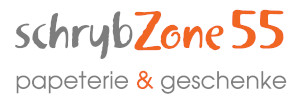Beschreibung
Twardowski's little book - of which I here offer a translation - is one of the most remarkable works in the history of modern philosophy. It is concise, clear, and - in Findlay's words - "amazingly rich in ideas. "l It is therefore a paradigm of what some contemporary philosophers approvingly call "analytic philosophy. " But Twardowski's book is also of considerable historical significance. His views reflect Brentano's ear lier position and thus shed some light on this stage of Brentano's philo sophy. Furthermore, they form a link between this stage, on the one hand, and those two grandiose attempts to propagate rationalism in an age of science, on the other hand, which are known as Meinong's theory of entities and HusserI's phenomenology. Twardowski's views thus point to the future and introduce many of the problems which, through the influence of Meinong, HusserI, Russell, and Moore, have become standard fare in contemporary philosophy. In this introduc tion, I shall call attention to the close connection between some of Twardowski's main ideas and the corresponding thoughts of these four philosophers. 1. IDEAS AND THEIR INTENTIONS Twardowski's main contention is clear. He claims that we must dis tinguish between the act, the content, and the object of a presentation. The crucial German term is 'V orstellung. ' This term has a corresponding verb and allows for such expressions as 'das V orgestellte.
Autorenportrait
Inhaltsangabe1. Act, Content, and Object of the Presentation.- 2. Act, Content, and Object of the Judgment.- 3. Names and Presentations.- 4. The "Presented".- 5. So-called "Objectless" Presentations.- 6. The Difference between Content and Object.- 7. Description of the Object of a Presentation.- 8. The Ambiguity of the Term 'Characteristic'.- 9. The Material Constituents of the Object.- 10. The Formal Constituents of the Object.- 11. The Constituents of the Content.- 12. The Relationship between the Object and the Content of a Presentation.- 13. The Characteristic.- 14. Indirect Presentations.- 15. The Objects of General Presentations.














